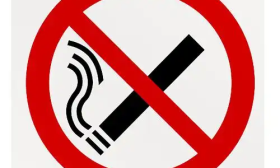The Hidden Hazard: How Smoking Elevates Surgical Risks in Pulmonary Aspergilloma Patients
When we talk about smoking and health, lung cancer and heart disease often dominate the conversation. But there's a less-discussed, yet critically important, connection that deserves our full attention: the way smoking dramatically increases the risks associated with surgery for a condition called pulmonary aspergilloma. For patients facing this complex lung issue, the decision to light a cigarette can profoundly influence their surgical journey and long-term recovery.
Let's start by understanding the key players in this story. A pulmonary aspergilloma, sometimes known as a "fungus ball," is a tangled mass that forms in a pre-existing cavity within the lung. This cavity is often a legacy of a previous lung disease, such as tuberculosis, sarcoidosis, or advanced emphysema. The mass itself is made up of fungal filaments, primarily from the Aspergillus species, blood clots, and inflammatory cells. Think of it as a moldy, fragile ball taking up residence in a hollowed-out space in your lung.

Many people live with a small, stable aspergilloma without any symptoms. However, for others, it can cause a distressing and dangerous symptom: hemoptysis, or coughing up blood. This happens because the fungus ball irritates the highly vascular walls of the lung cavity, leading to bleeding. When bleeding becomes significant or recurrent, or if symptoms like chronic cough and weight loss are severe, surgical removal of the affected part of the lung is often considered the definitive treatment.
This is where smoking enters the picture, not as a minor complicating factor, but as a central antagonist. Smoking is a primary cause of Chronic Obstructive Pulmonary Disease (COPD), a condition characterized by damaged air sacs (emphysema) and chronic bronchitis. This damage creates the perfect anatomical landscape—those lung cavities—for an aspergilloma to develop in the first place. So, smoking is often a root cause of the very environment that allows the fungus ball to form.
But the more immediate and dangerous interaction occurs when a smoker with a pulmonary aspergilloma needs surgery. The physiological changes caused by long-term smoking create a perfect storm of surgical risk factors for aspergilloma patients.
1. Compromised Lung Function and Poor Wound Healing The lungs of a smoker are already under siege. Tar and other chemicals damage the cilia—the tiny hair-like structures that sweep mucus and debris out of the airways. This leads to a buildup of secretions. Furthermore, smoking causes chronic inflammation and destroys the elastic fibers in the lungs, reducing their ability to expand and contract efficiently.
Before lung surgery, patients undergo pulmonary function tests (PFTs) to see if they have enough healthy lung tissue remaining to survive after a portion is removed. Smokers often have significantly poorer PFT results. This not only makes them borderline candidates for surgery but also drastically increases the risk of post-operative complications. After the operation, the remaining lung tissue needs to work harder. A smoker's compromised lungs struggle to do this, leading to a higher chance of respiratory failure, pneumonia, and prolonged dependence on a ventilator.
Moreover, smoking impairs blood circulation by constricting blood vessels and reducing oxygen delivery to tissues. For a major surgical patient, optimal oxygen delivery is non-negotiable for wound healing. Poor healing at the surgical site, such as the bronchial stump (where the lung was sewn shut), can lead to a catastrophic complication called a bronchopleural fistula—a leak between the airway and the space around the lung. This complication is notoriously more common in smokers.
2. Increased Anesthesia and Intraoperative Challenges Administering anesthesia to a smoker undergoing lung surgery is a more complex task for the anesthesiologist. Smokers have increased airway reactivity, meaning their airways are more prone to spasm and constrict during intubation (the placement of the breathing tube). This can lead to sudden drops in oxygen levels during the critical induction phase of anesthesia.
The chronic inflammation and mucus production also mean that the patient's airways are "dirty," filled with secretions that can be dislodged during manipulation, potentially leading to post-operative lung infections or blockages. The surgeon also faces a tougher technical challenge. The lung tissue of a long-term smoker is often more fragile, sticky, and adherent to the chest wall due to chronic inflammation. This makes the dissection process more difficult, increases the risk of unintended tears in the lung, and can lead to greater blood loss during the procedure.
3. The Immune System: A Double Whammy Fungal infections like aspergilloma are kept in check by a robust immune system. Smoking has a profoundly suppressive effect on immunity. It cripples the function of immune cells like alveolar macrophages and neutrophils, which are the body's first line of defense against fungal spores. This weakened immune state not only potentially allows the aspergilloma to become more aggressive but also leaves the patient wide open to post-operative infections. A body already struggling to fight a fungus now has to contend with the massive stress of surgery and the risk of bacterial pneumonia in a hospital setting. The consequence is a significantly higher rate of post-surgical infections, sepsis, and a longer, more complicated recovery period.
The Critical Role of Preoperative Smoking Cessation The good news in this high-risk scenario is that the damage is not entirely irreversible. This brings us to the most crucial long-term strategy for managing aspergilloma surgical risk: smoking cessation.
The benefits of quitting smoking before surgery, even for a short period, are profound and well-documented. The body begins to repair itself almost immediately:
- Within 12-24 hours: Carbon monoxide levels in the blood drop, improving oxygen delivery to tissues.
- Within 2-3 weeks: Lung function and ciliary function begin to improve, reducing mucus buildup and airway reactivity.
- Within 4-6 weeks: Immune system function starts to recover, and the risk of post-operative complications drops significantly.
Surgeons will strongly advise, and often insist, that patients stop smoking for at least 4-8 weeks before elective surgery for pulmonary aspergilloma. This period allows the airways to clear, reduces anesthetic risks, and improves the body's overall resilience. For a patient, this single action—quitting smoking—is the most powerful tool they have to take control of their health outcome. It transforms them from a high-risk candidate into a more manageable one, paving the way for a smoother surgery and a faster, safer recovery. This is an essential part of improving quality of life after aspergilloma resection.
Navigating Treatment Decisions and Post-Operative Life The presence of active smoking forces a difficult conversation between the patient and their healthcare team. In some cases, the risks may be deemed so high that surgery is postponed until the patient can successfully quit and demonstrate improved lung function. Alternatively, the team may explore less invasive options, such as bronchial artery embolization (a procedure to block the blood vessels feeding the aspergilloma to stop bleeding), recognizing it as a temporary measure rather than a cure.
For the patient who successfully quits and undergoes surgery, the journey doesn't end in the operating room. The principles of managing aspergilloma with underlying COPD continue. Pulmonary rehabilitation, including breathing exercises and physical conditioning, becomes paramount to regain strength and lung capacity. Continued abstinence from smoking is the cornerstone of preventing further lung damage and avoiding the development of new aspergillomas in other damaged areas of the lung.
In conclusion, the link between smoking and increased surgical risk for pulmonary aspergilloma is direct, multifaceted, and severe. It impacts everything from eligibility for surgery to the technical execution of the procedure and the long road to recovery. For anyone diagnosed with this condition, understanding this connection is the first step. The decision to quit smoking is not just a lifestyle recommendation; it is a critical medical intervention. It is the most significant factor a patient can control to tip the scales in their favor, turning a high-risk operation into a successful treatment and opening the door to a healthier future, free from the dual burdens of a fungus ball and tobacco addiction.












